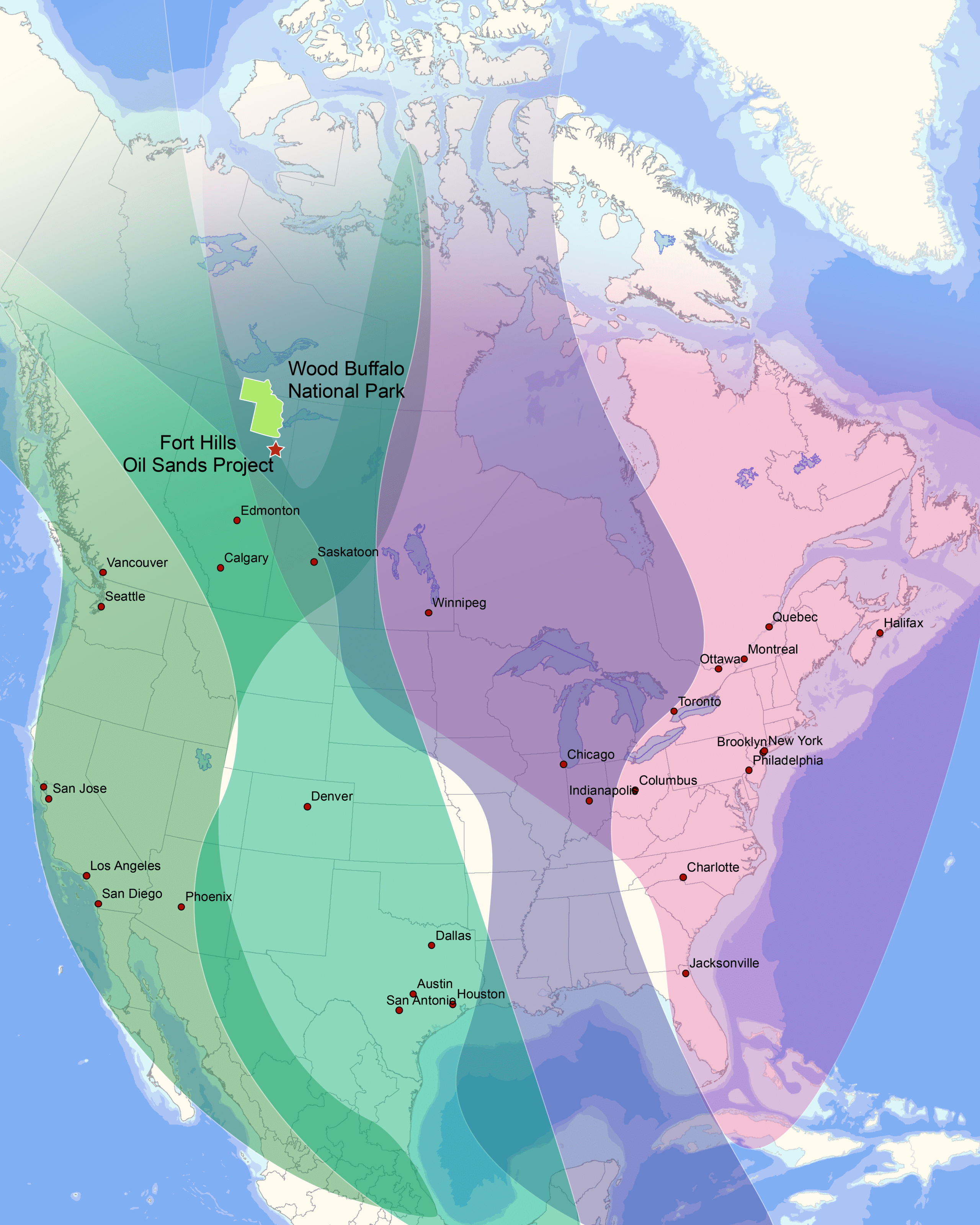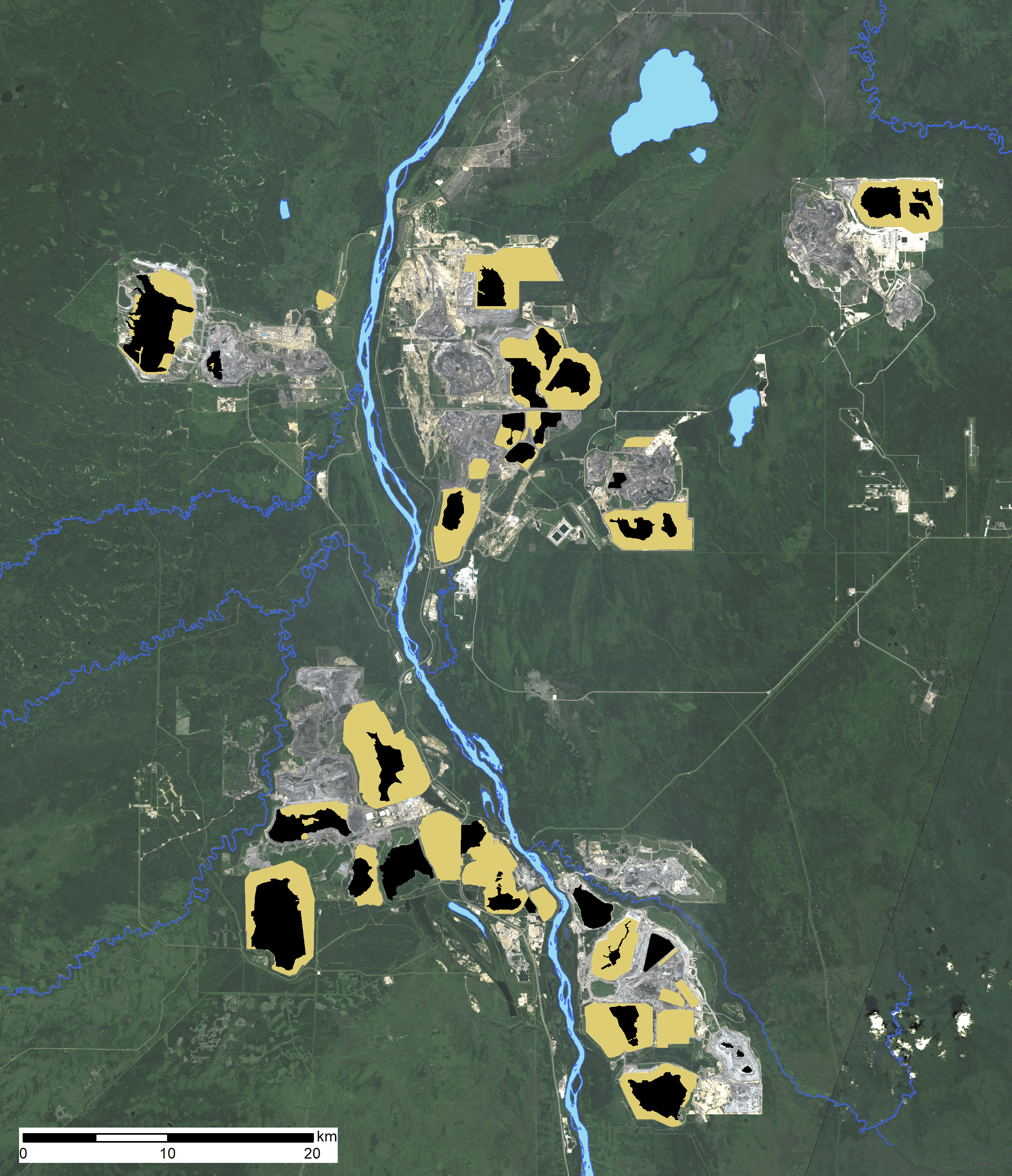International Recognition
Wood Buffalo National Park is listed as a World Heritage Site by the United Nations Educational, Scientific, and Cultural Organization (UNESCO), recognizing its outstanding international importance and deserving of special protection.
Its outstanding ecological characteristics include the largest Great Plains-Boreal Grassland ecosystem in North America where the relationship between wolves and wood bison remain untouched, the provision of breeding habitat for the endangered whooping crane, and, the inland delta, salt plains, and gypsum karst that support a great concentration of migratory wildlife.
Pembina Institute, David Dodge CC BY-NC-SA 2.0
Take Action
Speak up for Wood Buffalo National Park
CPAWS continues to support Wood Buffalo’s potential listing as a World Heritage Site ‘in Danger’, until federal and provincial governments show strong commitments to addressing cumulative threats and achieve meaningful co-management of the park. Join our newsletter to stay up to date.
A World Heritage Site In Danger?
Degradation of the Peace-Athabasca Delta
Despite its immense ecological and cultural value, decades of prolonged dry periods have driven the degradation of the Peace-Athabasca Delta, starving the landscape and impeding traditional use by Indigenous communities.Unmanaged External Threats
Following a petition by the Mikisew Cree First Nation in 2014, the World Heritage Committee has been deliberating whether Wood Buffalo National Park should be designated as a World Heritage Site in Danger, due to the unmanaged external threats that have degraded the delta and affected rare whooping cranes and wood bison. If it was added to the list of World Heritage in Danger, this would be the first step in Wood Buffalo potentially losing it's World Heritage Site status altogether.Climate Change & Contaminates
The conservation of Wood Buffalo National Park is challenging because its threats are broad and arise from far outside its boundaries, like hydroelectric dams on the Peace River, oil sands development on the Athabasca River, and the ever-present effects of climate change. Using Traditional Knowledge and expert knowledge, the widespread extent of these impacts is understood, like how the park’s natural hydrological regimes have been extremely altered, the waters are loaded with environmental contaminants, and the different animals and plants that have adapted to the drying delta or left the area.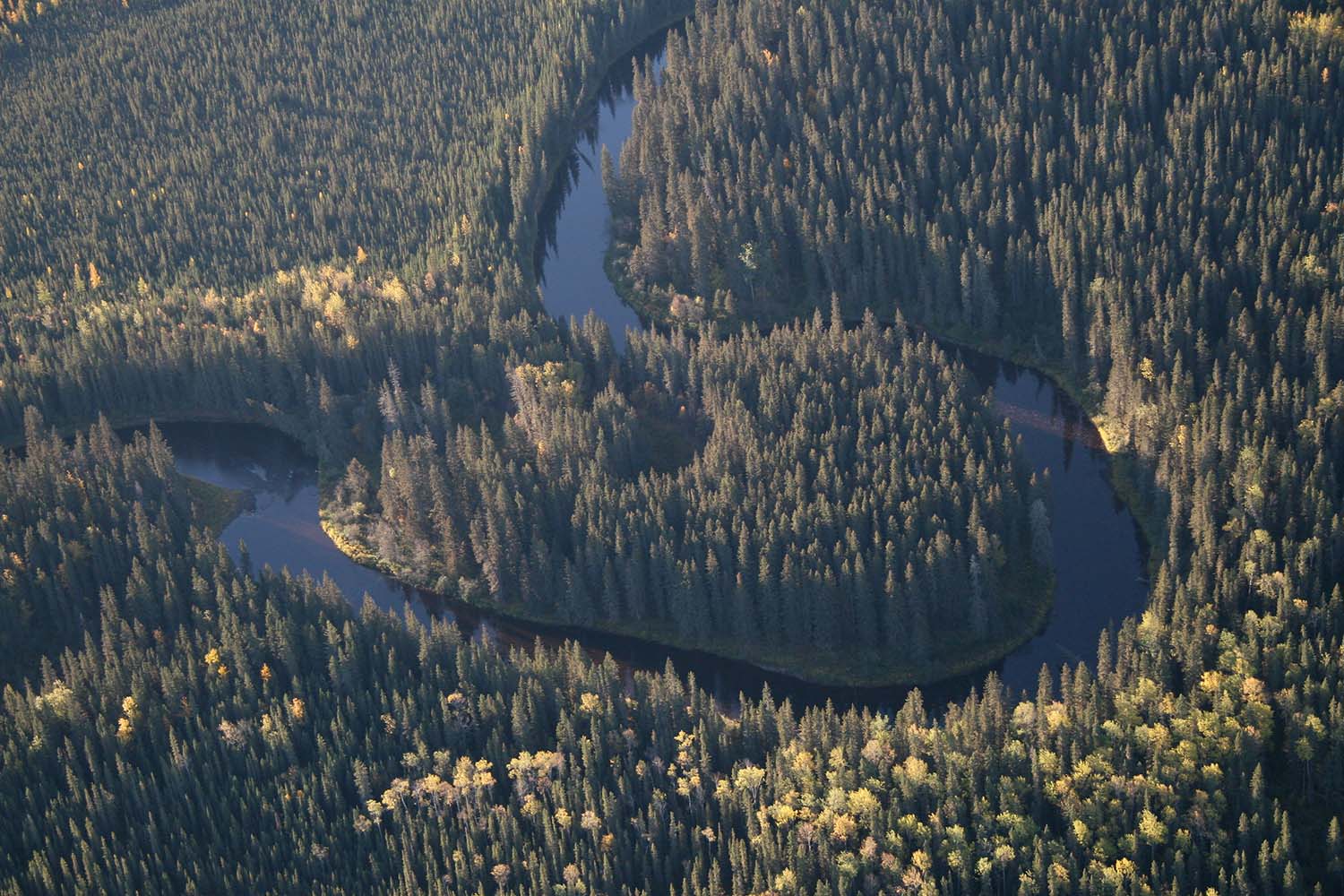
Photo: Pembina Institute, David Dodge CC BY-NC-SA 2.0
A Growing List of Threats
Climate Change
Climate change—one of the key threats to the Park—means that any further reduction in freshwater availability will compound the existing impacts from human activities and further risk the ecological integrity of the Park. As a high latitude freshwater delta, the park is especially sensitive to climate change impacts.Oilsands
Upstream of the Park resides Alberta’s oil sands on the Athabasca River. Oil sands projects use water diverted from the Athabasca River for processing and refining bitumen. These projects can incidentally expose the waters and air with environmental contaminants and toxins with negative impacts on downstream communities and Wood Buffalo National Park.Hydropower Projects
Hydroelectric dams on the Peace River interrupt water flowing from British Columbia to the Peace-Athabasca Delta. Though cumulative impacts of hydroelectric dams are still being studied, it is known that the many hydropower projects alter the quality and quantity of water that flows to the delta. On top of existing dams, the approved Site C threatens to add even more stress on the Peace River. Continued regulation of the Peace River alters the naturally fluctuating water levels and many experts have linked the dams to the drying of the delta we see today.Forestry
Animals on the landscape use areas inside and outside Wood Buffalo National Park. Logging that occurs outside the Park can still affect species-at-risk inside the Park. CPAWS Northern Alberta supports the establishment of protected areas to buffer the Park’s boundaries. When Wood Buffalo National Park was first established, commercial logging actually persisted along both major rivers inside the Park. Decades of logging removed major portions of valuable and rare forest types in the Park until CPAWS successfully campaigned to end commercial logging in the Park in 1992.Tailings Ponds
The total area of tailings in Alberta covers nearly 300 sq-km (about two and a half times the city of Vancouver!). Tailings ponds threaten the integrity of the park via spills, leaks, water withdrawals, potential malfunctions and tailings management failures. Recent scientific evidence shows that Alberta’s tailings ponds are leaking uncontrollably and seeping tailings fluid has been detected alarmingly close to the Athabasca River waters, which feeds directly into Wood Buffalo National Park. Tailings also risk the lives of migratory birds that must fly over the oil sands region to reach the Peace-Athabasca Delta every year to breed. Tailings are leftovers from the oil sands extraction process and include clay, sand, water, residual bitumen, hydrocarbons and trace metals. Contact with processed water is lethal for birds, and these impacts are heightened for species at risk with small populations, such as endangered Whooping Cranes.Weak Regulatory Rules
Effective provincial regulations are necessary to suitably address environmental risks of operations in the oil sands. However, even existing regulations can be inconsistent. For example, in May 2020, the provincial government suspended a series of environmental monitoring requirements for oil and gas projects across the province in response to COVID-19 public health concerns, though actual oil and gas operations continued.A National Park at risk
Wood Buffalo National Park was designated a World Heritage Site in 1983. With longstanding concerns about the deterioration of the park, the Mikisew Cree First Nation formally petitioned the UN body in 2014 to have the site listed as a World Heritage Site in Danger. This designation is “to inform the international community of conditions which threaten the very characteristics for which a property was inscribed on the World Heritage List, and to encourage corrective action.”
In the years following this petition, Canada carried out several actions to help restore the ecological health of the park, including: inviting a reactive monitoring mission by the UN, completing a strategic environmental assessment of the cumulative impacts on the park, the development of an Action Plan, and a $27.5 million investment and later a $59.9 million additionally funded in the park.
In 2019, at the 43rd World Heritage meeting in Baku, Azerbaijan, the committee issued a decision that commended Canada on it’s plans for the Park so far, but recognized that considerably more effort would be needed to address the threats to the Park.
In July 2021, at the 44th World Heritage meeting, the UNESCO Committee issued a striking decision to formally request Canada invite an independent investigation into the status of Wood Buffalo National Park, called a Reactive Monitoring Mission. The Committee confirmed the deteriorating condition of the park could justify listing as a World Heritage Site in Danger and this investigation would determine if a change in status is warranted.
The Reactive Monitoring Mission occurred in August 2022. The report describes the trips findings and provides 17 recommendations to improve the outlook in the park.
An Action Plan For Wood Buffalo
Parks Canada has an Action Plan (2019) which outlines 142 actions that Parks Canada has taken, or intends to take, to improve the outlook of the Park. The Plan depends on collaboration with the Government of Alberta, the Government of British Columbia, and the Government of Northwest Territories. It focuses on research to understand baseline flow and hydrological conditions within the delta, exploring timed releases of water by BC Hydro to replenish the delta, and strengthening partnerships with Indigenous communities by incorporating traditional knowledge in its management plan.
Since its release in 2019, environmental groups and Indigenous groups have been vocal about the need for faster and more urgent implementation of the Action Plan. CPAWS feels it is especially important that Parks Canada prioritize:
- Establishing water management agreements and governance structures to address shared responsibilities and power, and monitoring and science capacity by Indigenous communities;
- The initiation and completion of a Tailings Risk Assessment;
- Progress on the development of protocols and parameters for timed releases of water on the Peace River to sustain the delta’s ecological integrity and Indigenous rights; and,
- Allocating significant resources for Action Plan implementation.
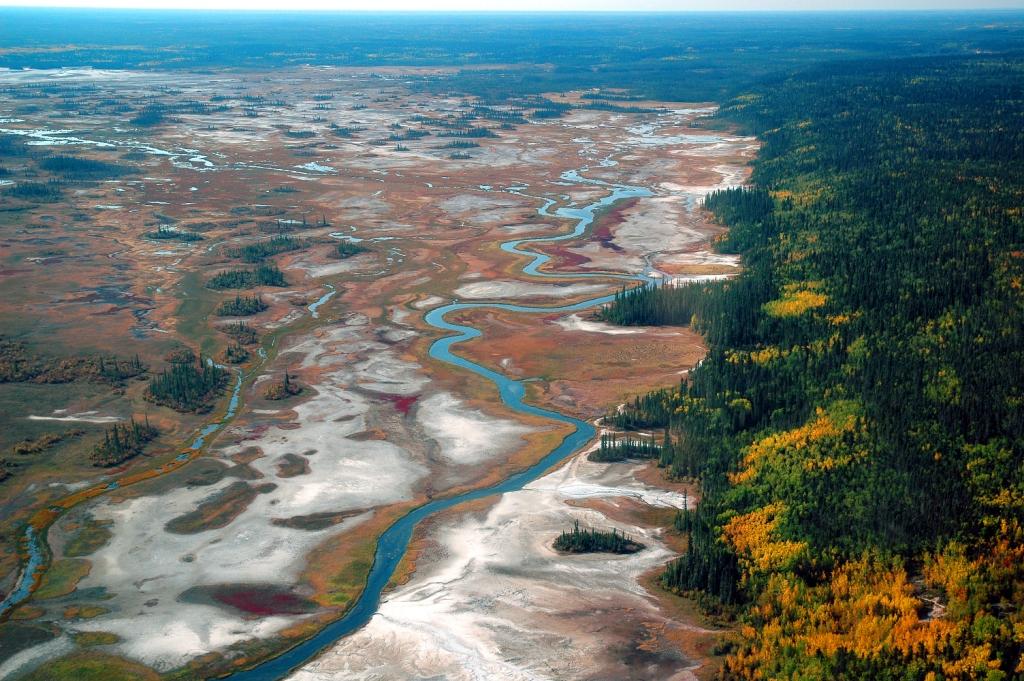
Public pushback needed to oppose new threats to Wood Buffalo
With the future of Wood Buffalo National Park and its Peace-Athabacsa Delta in a precarious state, a constant vigilance is needed to ensure new threats to the Park do not pop up. This means CPAWS Northern Alberta keeps an eye on new or growing stressors outside the park's borders, such as new projects in the oil sands region. The boreal forest is a vastly connected system and watershed and every landuse decision matters.
For example, the proposed Teck Frontier open-pit oil sands mine project would have contributed a 290 sq-km footprint just 30 kilometers south of the Park. The mine would have been the closest oil sands development to the Park, ever. The project did not move forward thanks to the passionate and overwhelming opposition from the public.
Updates
Other Resources

Why a ‘World Heritage Site in Danger’ listing might be the cure for the deteriorating Wood Buffalo National Park

The Key to Saving Wood Buffalo: Re-imagined Governance and Power Sharing

A Brief Indigenous History of Wood Buffalo National Park
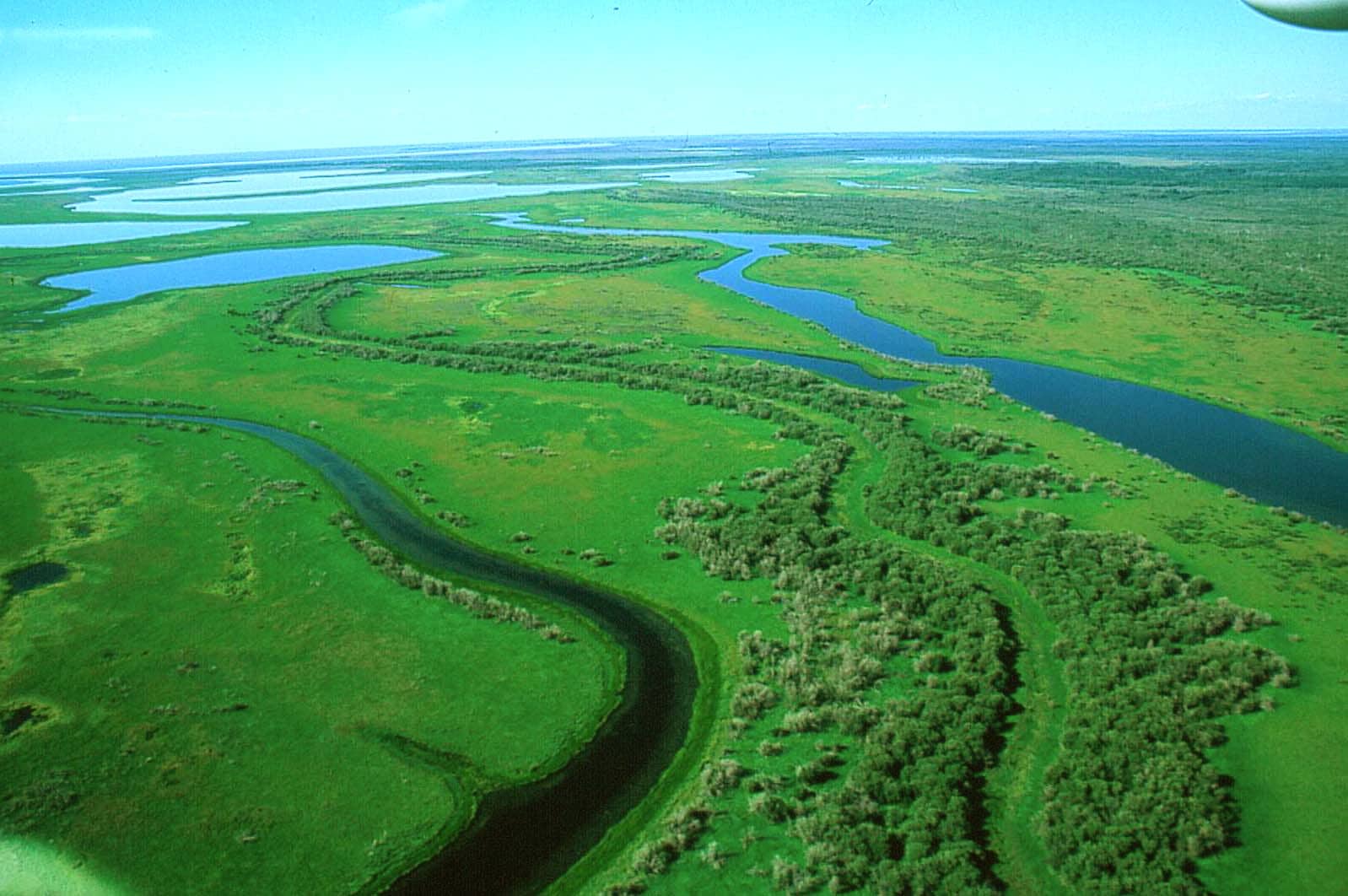
David Dodge, The Pembina Institute, CC-BY-SA 2.0
ENGO Reactive Monitoring Mission Presentations
As a part of the Reactive Monitoring Mission’s investigation, ENGOs (environmental non-governmental organizations) had the opportunity to present their concerns regarding Wood Buffalo National Park’s integrity.
Presenters included Gillian Chow-Fraser from CPAWS Northern Alberta, Carolyn Campbell from the Alberta Wilderness Association (AWA), Adam Norris from the Mighty Peace Watershed Alliance, and Dr. Cheryl Chetkiewicz from Wildlife Conservation Society (WCS) Canada, with comments from the University of Victoria Environmental Law Clinic and Keepers of the Water.
Download a copy of their presentations here.
© Wood Buffalo National Park collection, IUCNweb, CC-BY-SA 2.0
Take Action
Speak up for Wood Buffalo National Park
CPAWS continues to support Wood Buffalo’s potential listing as a World Heritage Site ‘in Danger’, until federal and provincial governments show strong commitments to addressing cumulative threats and achieve meaningful co-management of the park. Join our newsletter to stay up to date.
STAY INFORMED
Protect the Wilderness
To receive news and updates from CPAWS Northern Alberta, including opportunities to get involved, join our mailing list below.
